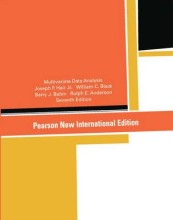CF Alle artikelen
13 important questions on CF Alle artikelen
What is the RQ of the article of
"Bruner, R., Chaplinsky, S., and Ramchand, L. (2006). Coming to America: IPOs from emerging market issuers. Emerging Markets Review"
What is the RQ, or if there is no RQ purpose of the article of
"McLean, R.D. (2011). Share issuance and cash savings,"
The purpose: This paper studies how the propensity to save share
issuance proceeds as cash has evolved over time. The propensity to save issuance proceeds as cash has increased significantly. During the 1970s, $1.00 of issuance resulted in $0.23 of cash savings. Over the most recent decade, $1.00 of issuance resulted in $0.60 of cash savings. Cash savings have become the primary use of share issuance proceeds for US firms
What are the conclusions of the article of
"McLean, R.D. Share issuance and cash savings?
- The results are consistent with the hypothesis that increasing precautionary motives and declining cash flow cause the increasing share issuance–cash savings relation.
- Trends in R&D spending, cash flow volatility, and dividend payments match the trend in the propensity to save share issuance proceeds as cash.
- firms issue and save during good times, so as to avoid issuance during bad times.
- Precautionary cash savings are an increasingly important motivation for share issuance.
- Higher grades + faster learning
- Never study anything twice
- 100% sure, 100% understanding
What is the RQ, or if there is none, the purpose of the article of
"De Jong, A., Kabir, R., & Nguyen, T. (2008). Capital structure around the world: the roles of firm- and country-specific determinants"
Directly: For example The available bond market
Indirect: The impact on firm-specific factors
What are the hypothesis of the article of
"De Jong, A., Kabir, R., & Nguyen, T. (2008). Capital structure around the world: the roles of firm- and country-specific determinants"
- Firm-specific effects: Do the firm-specific effect have a positive or a negative effect.
- Equal Firm-specific coefficients: Are the Firm-specific coefficients equal across all countries
- Direct country-specific effect: Does a Bond or stock market structure have a positive or negative effect on leverage
- Indirect country-specific effect
What are the conclusions or main findings of the article of
"De Jong, A., Kabir, R., & Nguyen, T. (2008). Capital structure around the world: the roles of firm- and country-specific determinants"
- We find that firm-specific factors differ across countries.
- Prior studies imply equal impacts
- Direct: Effects of country-specific factors on leverage
- Indirect: Effects through their influence on firms specific factors
What is the RQ or if there is none, the purpose of the article of
Brockman, P., Tresl, J., & Unlu, E. (2014) The impact of insider trading laws on dividend policy.
does firm-level payout policy serve as a substitute (i.e., bonding) mechanism for country-level institutional weakness?
What are the hypothesis of the article of
Brockman, P., Tresl, J., & Unlu, E. (2014) The impact of insider trading laws on dividend policy.
- firms use dividend payout policy to offset the harmful effects of weak investor protection leads to directly testable implications
What is the conclusion of the article of
Brockman, P., Tresl, J., & Unlu, E. (2014) The impact of insider trading laws on dividend policy.
- Dividend payouts serve as a substitute bonding mechanism when country-level legal protections fail
- Weak insider trading laws lead to a higher propensity of paying dividends, larger dividend amounts and greater smoothing
- Markets valuation of dividend payouts is significantly higher when insider trading protection is weak
What is the RQ, or if there is none, what is the purpose of the article of
Bliss, B.A., Cheng, Y., and Denis, D.J. (2015). Corporate payout, cash retention, and the supply of credit: Evidence from the 2008–2009 credit crisis
- To what extent do firms adjust their payout policies in response to a shock to the relative costs and benefits of internal and external financing sources?
- What roles do share repurchases and dividends play in the process of managing cash and internal capital?
What are the conclusions of the article of
Bliss, B.A., Cheng, Y., and Denis, D.J. (2015). Corporate payout, cash retention, and the supply of credit: Evidence from the 2008–2009 credit crisis
- Payout reductions are larger and more pervasive during the crisis period.
- payout reduction became an alternative form of financing because the crisis increased the cost of external financing
What is the RQ, or if there is none, what is the purpose of the article of
Schmidt, B. (2015). Costs and benefits of friendly boards during mergers and acquisitions.
What is the RQ of the article of
Tao, F., Liu, X., Gao, L., and Xia, E. (2017). Do cross-border mergers and acquisitions increase short-term market performance? The case of Chinese firms
- What are the stock market reactions to cross border M&A announcements by Chinese firms
- Do investors in the hong kong stock market respond differently to cross border M&As by Chinese firms compared with those in the shanghai and Shenzhen stock markets in mainland China?
- To what extent does political risk in the country of origin of the target firms, and the ownership status of the acquiring firms, affect the short-term stock market performance of Chinese firms with cross-border M&a
The question on the page originate from the summary of the following study material:
- A unique study and practice tool
- Never study anything twice again
- Get the grades you hope for
- 100% sure, 100% understanding































